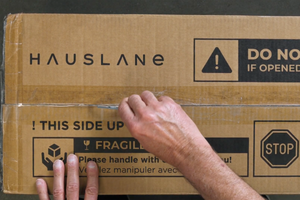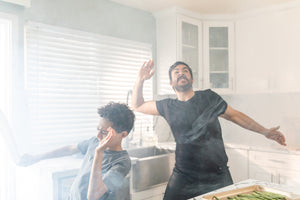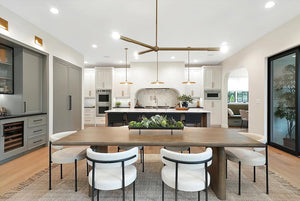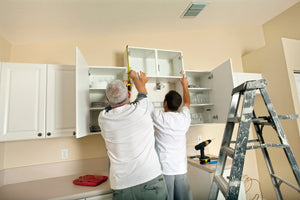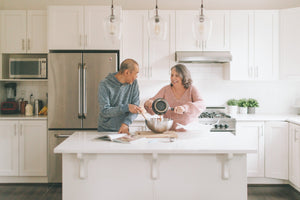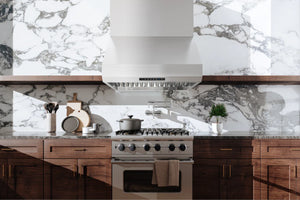TIPS & GUIDES
3 Types of Non-Toxic Kitchen Cabinets for Your Remodel
By Hauslane ∙ 5 mins readYour kitchen cabinets should suit your style and be made to last. However, did you know that some cabinets release harmful chemicals and even contain formaldehyde? This naturally occurring substance is present in many composite wood products. These products emit vaporous formaldehyde, which poses several health risks because it is a neurotoxin and a cancer-causing chemical. It’s not uncommon for factory-made furniture, including kitchen cabinets to contain formaldehyde. For your health and safety, opt for non-toxic kitchen cabinets instead.

The Risks Behind Toxic Kitchen Cabinets
You might be wondering whether these types of cabinets can really pose a risk to your health. It’s not just a talking point, though. Over time, researchers have discovered how the materials and manufacturing techniques used to make mass-produced kitchen cabinets and other types of furniture can release toxins.
Many low- and mid-priced cabinet brands use chipboard, medium-density fiberboard (MDF), or particleboard to build their cabinets. These are low-quality, environmentally dangerous materials that are exceedingly challenging to recycle. To top it off, formaldehyde-containing glue is frequently used to assemble MDF and particleboard cabinets.
Formaldehyde is one of the most prevalent volatile organic compounds (VOCs). You definitely don't want it in your home because VOCs can cause a variety of health issues, including:
✦ Charcoal filters
✦ Itching of the eyes, nose, and throat
✦ Shortness of breath
✦ Fatigue
✦ Nausea
✦ Headaches
✦ Rashes and skin problems
✦ Dizziness
High levels of VOCs can result in more severe problems, such as:
✦ Lung irritation
✦ Liver damage
✦ Kidney and central nervous system damage
✦ Cancer
Buying traditional cabinets made of MDF or chipboard puts your health at risk because for weeks after installation, they release formaldehyde into your home. The adverse effects of VOCs in traditional cabinets are hazardous for people with asthma, eczema, or other immune system impairments. After reading this, you might be curious if there are any alternative options for kitchen cabinets. Fortunately, there are plenty of kitchen cabinets made with non-toxic, minimal volatile organic compounds (VOCs) on the market.
Safe and Sustainable Cabinet Materials
Let’s take a look at some of the most popular, non-toxic cabinet materials.

Hardwood
Solid hardwood can be used to make wood cabinets. It is a non-toxic cabinet material because it is entirely composed of wood and does not require adhesives to bond the wood.
Pros: Hardwood never goes out of style and comes in many natural colors. The wood is durable and can be customized according to your preferences.
Cons: They require more maintenance and can react poorly to humidity.

Stainless Steel
Stainless steel is one of the most popular materials for the kitchen, and with good reason. It’s durable, classic, and hygienic. Stainless steel cabinets have a modern, fresh look that works for commercial and residential kitchens.
Pros: Easy to clean and durable with a timeless appearance.
Cons: Can scratch easily, more costly than composite wood options.

Bamboo
Bamboo is actually a type of grass but can be used in a similar fashion as hardwood to make beautiful cabinets. Bamboo cabinets are a bit harder to find but are a durable, sustainable material.
Pros: Long-lasting, environmentally friendly.
Cons: Difficult to find, not as many styles available
No matter what kind of kitchen cabinet material you choose, you’ll want to have the right appliances in place to make cooking an enjoyable experience. At Hauslane, you’ll find plenty of options to choose from to find the ideal range hood. If you’re not sure where to start, check out our buyer’s guide.






